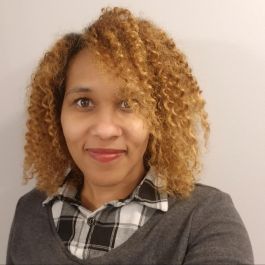In a global study of 1,471 IT change initiatives, Harvard Business Review discovered an alarming trend, and one that illuminates the risks involved in project rollouts. While the average project cost overrun was 27%, one in six projects averaged a 200% overrun. Case studies of these colossal project failures abound, like Kmart’s $1.4 billion IT modernization project in 2000, the breakdown of which contributed to its filing for bankruptcy just two years later.
While these studies provide helpful retrospect, each new project exists in its own setting, with specific elements, and always with the risk of unpredictable factors. In local Senior Project Manager Tanesha Johnson’s experience, one of the biggest challenges project managers face is conveying the value of a professional PM to stakeholders.
With so much at stake, including the very survival of a business, it is critical that leadership behind new projects is experienced and nimble. Whether that involves expertise that spans the full length of a project, or just one of that project’s stages, foundational project management strategies can help keep objectives in focus and deployment on track.
From small-scale implementations to broad infrastructure developments, professionals of all stripes can lean on these tactics to help a project cross the finish line.
Tips for a successful project rollout
- Follow the initiation and planning phases
- Emphasize the importance of effective communication and transparency
- Set meetings weekly or a few times a week to discuss progress
- Constantly reevaluate
- Build a project roadmap and seek team agreement before moving forward
SDI Presence
Tanesha Johnson
SENIOR PROJECT MANAGER

How does one strategically managing a project’s evolution? Over the course of development and deployment, new factors and unforeseen obstacles can steer a team off-course. With a multitude of initiatives to keep in focus, SDI Presence’s Johnson leans on each project’s initial planning phase to align new developments with fundamental objectives.
First, tell us a bit about the types of projects you manage in your role.
As a Senior Project Management Office (PMO) Manager for a major client of SDI Presence, I am responsible for implementing and leading the PMO for SDI’s client delivery services. My day-to-day duties include managing a rolling portfolio of 20 to 30 developing IT projects and programs, 53 ongoing projects, a budget of over $2.5 million and overseeing a team of seven project managers.
SDI has myriad capabilities to meet the demands of its clients’ IT environments. Our projects are multifaceted, and programs range from infrastructure development and data center migrations, to server upgrades and asset management.
Regardless of how urgent or time-sensitive our project requests are, the best practice is to follow the initiation and planning phases.’’
What’s one critical best practice you follow when it comes to project management, and why?
Regardless of how urgent or time-sensitive our project requests are, the best practice is to follow the initiation and planning phases. In these phases, we identify project scope and stakeholders to influence perception, adoption and transition within the organization, as well as project goals and objectives.
SDI delivers innovative and cost-efficient expertise to our clients’ projects and extended organization through targeted planning, integration and optimization. To maximize the success of our project outcomes, the SDI PMO team ensures time and resources are efficiently allocated across all projects and aligned with the client’s overall mission.
What’s one of the biggest challenges you’ve faced managing projects, and how have you overcome it?
One of the biggest challenges we face is helping stakeholders understand the value of having a highly professional PMO, who acts as an owner’s representative for complex, multi-year technology initiatives.
We want them to view project management as a valuable service that will speed up delivery by bringing resources together in a cohesive way, improving success rates. To overcome this challenge, the project manager’s role is clearly defined in the initial phase, and we reiterate the value proposition throughout the duration of the project. In addition, SDI’s IT Infrastructure Library (ITIL)- and Project Management Professional (PMP)-certified team of experts are integrated with our approach, and empowered with the right tools to serve as advocates for SDI’s project management process.
Lastly, customer satisfaction is the hallmark of every project delivery at SDI. We achieve that by delivering industry-recognized project management standards and disciplines, along with our commitment to be available for our clients when needed.
Camelot Illinois
Yelena Lyamets
PROJECT MANAGER

Camelot Illinois manages the marketing and digital sales efforts behind the Illinois lottery through its new website and mobile app, retail sales and expansion. For the teams Lyamets manages, hitting the workstream jackpot requires a savvy balance of communication, transparency, documentation and risk management.
Tell us a bit about the types of projects you manage in your role.
As part of the technology workstream, I manage retail rollout and expansion projects.
My projects’ objectives include the installation of new equipment and software to support a wide variety of games for the Illinois Lottery. I manage projects across multiple departments such as marketing, finance, digital, retail sales, business and technical, as well as coordinate dependencies and deliverables across multiple vendors.
What’s one critical best practice you follow when it comes to project management, and why?
I’d like to emphasize the importance of effective communication and transparency on all projects. Well-planned and consistent communication enables all parties to make the most informed decisions, which will translate into efficient project delivery; a lack of transparency may lead to counterproductive decisions, hindering project success. When executing across various functions, time zones and cultures, keeping everyone on the same page and providing visibility into the big picture is critical for effective collaboration. I ensure best practices are followed with proper documentation, recorded decisions and monitored dependencies.
Create a risk management plan in advance and maintain it throughout the project.’’
What’s one of the biggest challenges you’ve faced managing projects, and how have you overcome it?
Identifying potential ‘what if’ scenarios and developing contingency plans might be a challenge. Cross-functional projects don’t always go as planned because there are many variables that can create unlimited possibilities. My job as a project manager is to come up with alternate plans that the team may adopt to bring the project back on track. Create a risk management plan in advance and maintain it throughout the project. A risk charter consists of specific actions and procedures on how teams manage issues, change of scope, risk, quality, communication, cost, timeline and more.
Bliss Point Media
Mike Librie
MEDIA OPERATIONS SPECIALIST

Tell us a bit about the types of projects you manage in your role.
I manage a wide variety of projects in my role at Bliss Point Media, but most fall under two categories: external client-facing and internal. Both have their own unique requirements and challenges. External projects range from assessing potential test networks that fit a client’s demo to managing live campaigns. These usually require multiple moving parts from various stakeholders (us, the client, the networks, etc.) so communication is paramount.
On the other hand, internal projects can be anything from creating guidelines for a new process to organizing data to building a reference sheet for others to utilize. The key to these projects is precision and simplicity – everyone who looks at your work needs to know it’s accurate and can understand it with little help needed.
What’s one critical best practice you follow when it comes to project management, and why?
The MOST critical best practice to follow in project management is communication. It’s important to make sure that everyone involved is tied into each conversation and is well aware of progress on tasks in order to make projects run more effectively and efficiently. Depending on the scope of the work and size of the project, I like to set meetings weekly or a few times a week – even if it’s just for 15 minutes – so that everyone involved can provide updates, concerns, and ask questions to help push the project forward.
Everyone who looks at your work needs to know it’s accurate and can understand it with little help needed.”
What’s one of the biggest challenges you’ve faced managing projects, and how have you overcome it?
One of the biggest challenges I, and many others, face when managing projects is being blocked by external factors. For example, our project team can be working seamlessly internally, but face project delays when an outside source is not responding with a necessary deliverable. To overcome this, it is best practice to set expectations and deadlines at the beginning of the project, so that these outside sources know the exact scope and timeline of elements that are necessary from their end. This can alleviate a lot of the back and forth and confusion around what is expected of each party.
Edify
Kim Fields
DIRECTOR OF EDIFY LEARNING

First, tell us a bit about the types of projects you manage in your role.
My team at Edify designs, develops, and delivers learning content for our internal employees and external client audiences, which ranges from our channel partner community and end user audiences. Specifically, we create everything from quick guides, videos, e-learning courses, intranet website pages, slide decks and facilitator guides for live training, full blended training programs, and more. Additionally, my team sustains our onboarding program for when new Edifurians join the company, which is a program we also designed and developed. This is an example of a project that oscillates between “project” and “program” because it doesn’t have an official end date. However, we are constantly reevaluating and updating the content and experiences within it. Lastly, we also consult our internal business partners to provide learning expertise on projects that they’re running to achieve some of their business objectives.
So, the content that we create and manage, and our role within each of these projects, varies in size and complexity. This means that each project is different and we are always juggling small to large projects. Projects are always evolving and changing in priority to meet the needs of the business.
What’s one critical best practice you follow when it comes to project management, and why?
Constantly reevaluate. When the project is first scoped, we work really hard to understand all the surrounding project factors, like when the feature is going into testing and when it is officially releasing, who are experts for this project, what are the potential barriers we’ll face, how long should designing/storyboarding take, etc. Yet, something will always come up. The timeline will always change.
So, it’s important to remember that we are an innovative and agile company. This means that initiatives and priorities change, and that means our project timelines and details might need to flex. We are always in response to the business. I see change to the project as an expected expectation, so we always plan to constantly re-evaluate the landscape of the project. This lets us quickly pivot and respond. Yet, it ensures we still actively work to hit our main targets.
We are always prepared to purposefully pivot when needed.’’
What’s one of the biggest challenges you’ve faced managing projects, and how have you overcome it?
There are many factors to take into account, and the business needs are always evolving. So the scoping process is always a balance between what we know now and what we could know in the future. This plan is a very educated estimate and we constantly aim to get closer and closer to the target for each project. So, we always reflect at the end of projects to refine what we could do better when scoping the next project.
Specifically for my team, the success of our projects is based on our level of access to the right people, and these people are usually very busy building products, leading teams, touring to clients, and more. Because we are constantly faced with building timelines and targets based on this variable, we know that scoping is not a “rinse and repeat” step in the process.
Each project will have its own constraints, goals, timelines and targets. This means that we are constantly refining the scoping process. We work from a template that is constantly growing and changing as we learn from each project. We have a list of strategies for overcoming common constraints and barriers that we forecast will pop up. And, most importantly, we go into the process knowing that the project could change after scoping, so we are always prepared to purposefully pivot when needed.
Vendavo
Elvin McLaughlin
DIRECTOR, NORTH AMERICA IMPLEMENTATIONS

When launching new initiatives, the enthusiasm for success can mask excessive demand on resources. For McLaughlin, balancing the expectations of both internal and external stakeholders, as well as ensuring reasonable demands on resources’ time, is key to successful deployment at Vendavo.
First, tell us a bit about the types of projects you manage in your role.
At Vendavo, we deliver complex SaaS deployment projects. We generally have customers who purchase varying modules of our software that require configuration prior to use in “production” environments. Our delivery lifecycle includes planning, launch, development, testing and post-production support. Over the years we have found that incorporating a hybrid agile/waterfall approach during the development phase works best.
Our projects are unique in that we balance the expectations of both internal and external stakeholders. Our customers operate outside of our organization and often have their own project management best practices, which we meld into our model to keep both parties confident that their expectations of success will be met. We pay particularly close attention to program financials with respect to scope and time.
What’s one critical best practice you follow when it comes to project management, and why?
When it comes to project management, we build a project roadmap and seek team agreement before we move forward. This roadmap is a high-level graphical depiction of what we are trying to accomplish within delivery of the project. I start with a timeline for the entire engagement, followed by program lifecycle phases: discovery, development, test, deployment and maintenance. Next, I include epics so all parties have a clear understanding of when work products will be delivered to the customer. Finally, I compile a list of core project groups, which indicates who will have responsibility for each phase.
Often, PMs end up heads-down in a massive project plan and lose sight of the proverbial “forest.” Project teams that do not participate in project management every day in their career can easily become lost in the details of a 5K or worse, 10K line plan. They become hyper-focused on a single task and forget why their contributions are significant at the macro level. Roadmaps keep teams energized on how closely they are executing major deliverables. They are also a more digestible tool for use in executive-level meetings.
What’s one of the biggest challenges you’ve faced managing projects, and how have you overcome it?
Customer readiness. Within a transformation project, customers are eager to prove out the business case, which can sometimes lead to an exaggerated sense of readiness. There is a perception that high-value resources will be able to immediately take on a new project, along with continuing to flawlessly execute their “day job.” However, when resources have become “accustomed to the pain,” it is difficult for them to spend a significant amount of time defining, validating and testing the new and improved process. Management teams believe that since the business is already up running, the data required to feed the new system is readily available.
The solution: incorporate a customer readiness session in the planning phase. A responsibility-commitment chart shows the time and skill sets required for each phase. The customer is asked to identify “named” resources to ensure the plan is leveled and we are not overburdening a specific resource. Similarly, to safeguard against early data hiccups, I share a base data specification document and request that sample data is sent to my architect. These two pre-launch activities reduce early project churn.
Envysion
Julie Preston
PROJECT MANAGER III

To balance a variety of projects, each with their own intricacies, finding a common thread can save time and minimize errors. When assembling a project plan at Envysion, Preston leans on a master list of customer details to automate multiple kickoffs at once, freeing up time to focus on risk management and scope.
First, tell us a bit about the types of projects you manage in your role.
As a level III project manager for Envysion, I am responsible for the successful delivery of our managed video solutions to hundreds of customer sites. We primarily service the quick-serve restaurant (QSR) industry, and my projects range in size from just a few customer sites to hundreds of sites for national brands. I ensure workflow completion for multiple teams who contribute to our solution delivery, including hardware procurement and installation, point of sale integration, reporting dashboard setup and quality assurance. The full project life cycle of a project can be from three to four weeks to several months long.
What’s one critical best practice you follow when it comes to project management, and why?
Quickly assembling a project plan that is the right size is one of my critical best practices. With tight delivery timelines and multiple projects in progress, finding the time to assemble a quality project plan is extremely challenging. At Envysion, we have consolidated several project plan documents into one we call the ‘Technical Sites List.’ The payoff is big for the one-time effort needed to fill in details for hundreds of customer sites, and because it captures so much information up front, it is a huge component of our project plans. This one document can be used to kick off several other workflows using spreadsheet automation. I can make the latest information available to my customers and all other project stakeholders, in (almost) real time. Then, as the project progresses, my plans become more refined.
What’s one of the biggest challenges you’ve faced managing projects, and how have you overcome it?
One of the biggest challenges I face is scope creep. Keeping a project on budget is key, but at the pace that our projects move, catching and preventing scope creep is difficult. Seemingly small items can add up quickly, causing budget overruns and lost productivity. To overcome this, I first utilize our Technical Sites List and shared smartsheets to keep the project stakeholders updated on progress.
Another preventative measure that works well for me begins at project kickoff: clearly communicating to all project stakeholders the project’s deliverables, inclusions and exclusions. When changes in scope do happen, it is much easier to collect payment from the customer when they are fully aware of the original project scope. I also leverage the collective knowledge and experience of our Envysion project management team. We meet each morning to talk through current and upcoming projects, including their complexities. We have a productive, dynamic virtual team of project managers who are always willing to listen and provide input — this gives me another way to proactively manage scope.
VIZIO
Iggy Michniacki
PROJECT MANAGER

The wealth of content available on Smart TVs is made possible by teams like Michniacki’s, which introduce new apps and continuously manage existing features. While users binge-watch the next big summer hit, Michniacki is aligning VIZIO teams and their partners to keep content fresh.
First, tell us a bit about the types of projects you manage in your role.
I am the project manager for the Partner Apps team. I work with our partners and developers as they onboard, integrate and continuously manage their apps on our SmartCast Platform. Although it might seem like an app is delivered to our team and easily placed on the platform, there are many steps between introduction to production.
What’s one critical best practice you follow when it comes to project management, and why?
Communication; communication; communication: even if it’s at the level you think might annoy someone. It can get complicated enough being the traffic director for so many different sources and partners, but mixing in the rise of remote work adds new unique challenges. In any field, communication should always be a core focus in ensuring everyone is on the same page in delivering the best experience to our customers.
What’s one of the biggest challenges you’ve faced managing projects, and how have you overcome it?
Getting the ideas of teams and partners on the same page with tools. We have great tools for project management and communication, but with my role being relatively new, there have been plenty of challenges in making sure proper data, updates and forms are getting to the right contacts and teams. Thankfully, all the internal teams we work with are fantastic at staying on top of tasks, making life a bit easier. Using our current tools and mixing in new ones have made that part easier for all parties involved.


